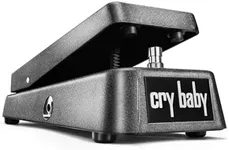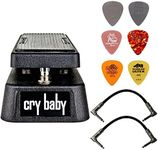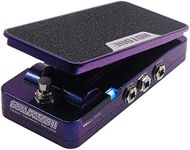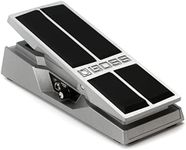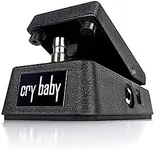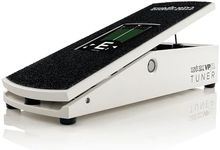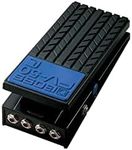Buying Guide for the Best Wah Volume Pedals
When it comes to choosing a wah-volume pedal, it's important to understand that this device combines two essential functions for guitarists: the wah effect and volume control. The wah effect is a sweeping filter that emphasizes certain frequencies, creating a distinctive 'wah' sound, while the volume pedal allows you to control the output level of your instrument. To find the best fit for you, consider the following key specifications and how they align with your playing style and needs.Sweep RangeThe sweep range of a wah pedal determines how wide the frequency range is that the pedal can affect. A wider sweep range means more dramatic tonal shifts, while a narrower range offers more subtle changes. If you play a variety of music styles, a wider sweep range might be more versatile. However, if you prefer a specific genre, like blues or rock, a narrower range might suit your needs better.
TaperThe taper of a volume pedal refers to how the volume changes as you move the pedal. A linear taper means the volume increases or decreases evenly, while an audio taper means the change is more gradual at the beginning and more pronounced at the end. For smooth volume swells, an audio taper is often preferred. If you need precise control over your volume, a linear taper might be more suitable.
Bypass TypeBypass type refers to how the pedal handles your signal when it is turned off. True bypass means the signal passes through unaffected, preserving your tone. Buffered bypass can help maintain signal strength over long cable runs but may slightly alter your tone. If you have a lot of pedals in your chain, a buffered bypass might be beneficial. For purists who want their tone untouched, true bypass is the way to go.
Construction QualityThe construction quality of a wah-volume pedal affects its durability and reliability. Look for pedals made with sturdy materials like metal housings and high-quality components. If you gig frequently or play in demanding environments, a robust construction is essential. For home use or occasional playing, a less rugged build might suffice.
Size and WeightThe size and weight of the pedal can impact its portability and how it fits on your pedalboard. Larger, heavier pedals might offer more stability and durability, but they can be cumbersome to transport. Smaller, lighter pedals are easier to carry and fit into tight spaces but may sacrifice some sturdiness. Consider your setup and how often you need to move your gear when choosing the right size and weight.
Power RequirementsPower requirements refer to how the pedal is powered, whether by batteries, a power adapter, or both. Battery-powered pedals offer convenience and portability, while adapter-powered pedals ensure consistent performance without worrying about battery life. If you play live often, having a pedal that can use both power sources can be a great advantage.
